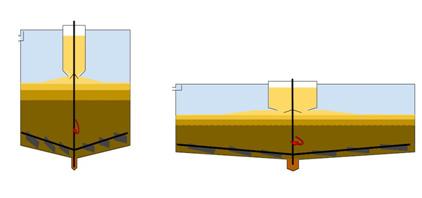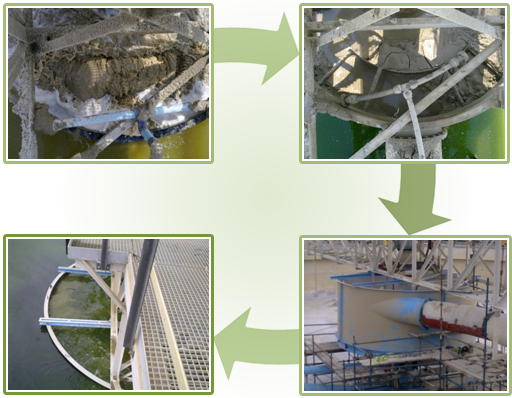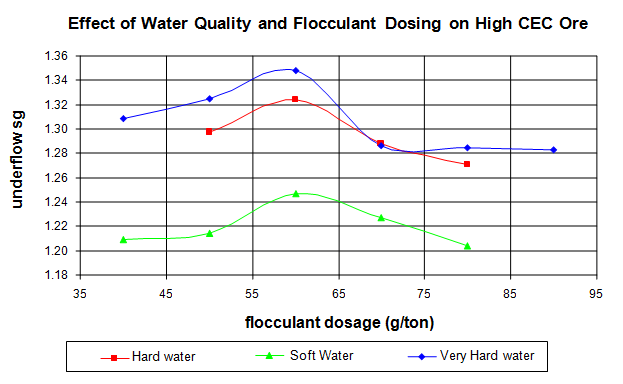Thickening
Most thickeners are still linked to previously installed designs and acceptance of new developments is slow. In recent years thickening and thickeners have been researched to push the boundaries of the technology and optimise water recovery. The drive to optimise dewatering through thickening has led to different thickener designs being proposed and tested. Success was mixed: the rakeless thickener for tailings was one of the casualties, but the lessons learned have advanced the understanding of thickening as a science. Improved thickener designs have resulted.
 |
One of the disputed design aspects is the tank: a higher tank wall with smaller diameter versus a lower tank wall with larger diameter. Progress has been made in understanding the effect of tank wall height, but many developments in this regard are still in the testing phase or implemented at limited applications. The effect of silt and clays in slurries has been well researched and is now better understood, as is the effect of process water composition on thickening. |
|
The science of thickening now also incorporates aspects of complementary sciences such as soil science and surface chemistry.
|
Higher charge densities result in more complex dewatering characteristics:
|
What makes Live Blue Marble (LBM) different?
 Clockwise: A problematic feedwell in operation and chocked; the feedwell retrofit and the retrofitted feedwell in operation |
LBM has unique experience in thickener operation, optimisation and fault finding, gained in operating and studying the behaviour of thickeners from different suppliers. LBM has undertaken the hands-on operation of thickeners from the control room. We have investigated thickener behaviour including flow patterns, settling and density profiles through the mud bed. These observations and investigations enabled LBM to formulate and test several hypotheses, which culminated in alternative feedwell and rake designs based on new understanding and knowledge. |
Thickener control
LBM's experience in thickener operation and behaviour resulted in our unique thickener control philosophy, which has been implemented and tested. The great benefit is control instrumentation that is proven to require minimal maintenance in the thickener environment.
Flocculant testing
LBM undertakes flocculant testing and specification with the best available technology. Testing equipment includes a flocculant pipe reactor that enables us not only to recommend the flocculant type but also the number and position of flocculant dosing points. LBM also tests the effect of variations in thickener feed rate. Such testing makes it possible to minimise flocculant consumption and optimise thickener performance.
Expertise
LBM has the equipment and expertise to test and specify thickeners for a specific application.
Our expertise in thickening, including "paste thickening", has been proven in many project consultations, thickener specifications and peer-reviewed publications.
LBM's changes in feedwell design, rake designs, thickener control philosophy and flocculant testing methodology were reported at the Paste 2012 conference.

